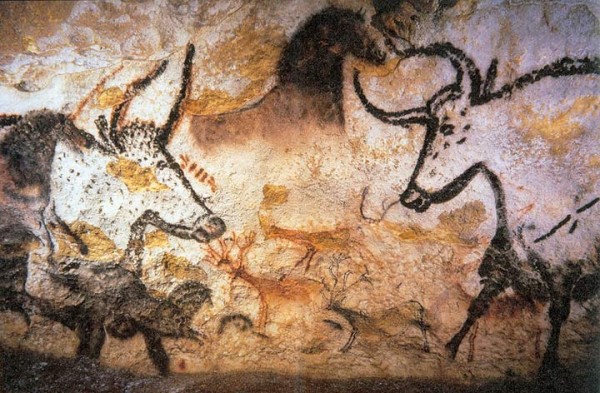By Ana Verayo, | October 19, 2016

Cave painting of aurochs, horses, and deer at Lascaux, France.
Scientists have confirmed the existence of a unique ancient species of bison-cattle hybrid that was first seen in Ice Age cave art.
Scientists have obtained DNA samples from fossilized specimens of this ancient creature to carry out further analysis. According to the new study, this bison hybrid apparently roamed Europe during its last Ice Age around 110,000 to 12,000 years ago.
Like Us on Facebook
New findings reveal that this hybrid species was produced when the now extinct Aurochs, which is the ancestor of modern day cows, mated with a steppe bison from the Ice Age.
This new cattle-bison hybrid became an entirely new species. This bison is an ancestor of the modern European bison known as the wisent which is still living in smaller herds in the grassland regions of Poland, Belarus, and neighboring countries.
According to Alan Cooper, who is the director of University of Adelaide's Australian Centre for Ancient DNA, this hybridization resulted in a completely new species. He noted that this a surprise as it is not common in mammals.
Scientists have known for a while that the steppe bison is the only bison species that roamed Europe and Eurasia during the last Ice Age. However, new evidence from radiocarbon dating reveals DNA from several ancient bison bones that they shared the same grassland habitats and territories with this hybrid.
The team describes these ancient bison bones as odd since the genetic signals do not belong to any known bison species. They have named this discovery as the "Higgs Bison."
According to the lead author of the study, Julien Soubrier from the University of Adelaide, the dated bones reveal a new species of a steppe bison that dominated Europe's bison populations several times due to environmental changes brought about by climate change.
This new study was published in the journal Nature Communications.
-
Use of Coronavirus Pandemic Drones Raises Privacy Concerns: Drones Spread Fear, Local Officials Say

-
Coronavirus Hampers The Delivery Of Lockheed Martin F-35 Stealth Fighters For 2020

-
Instagram Speeds Up Plans to Add Account Memorialization Feature Due to COVID-19 Deaths

-
NASA: Perseverance Plans to Bring 'Mars Rock' to Earth in 2031

-
600 Dead And 3,000 In The Hospital as Iranians Believed Drinking High-Concentrations of Alcohol Can Cure The Coronavirus

-
600 Dead And 3,000 In The Hospital as Iranians Believed Drinking High-Concentrations of Alcohol Can Cure The Coronavirus

-
COVID-19: Doctors, Nurses Use Virtual Reality to Learn New Skills in Treating Coronavirus Patients







